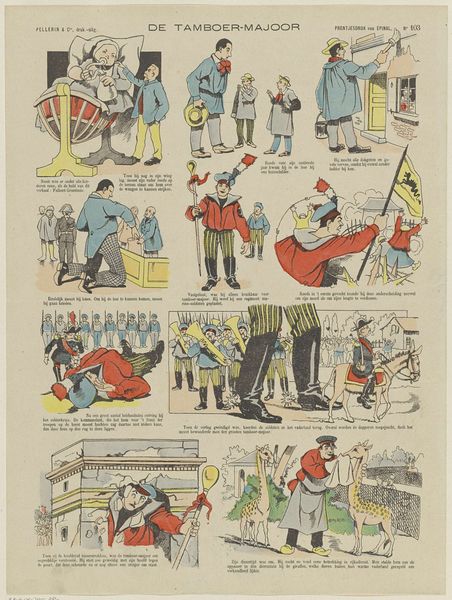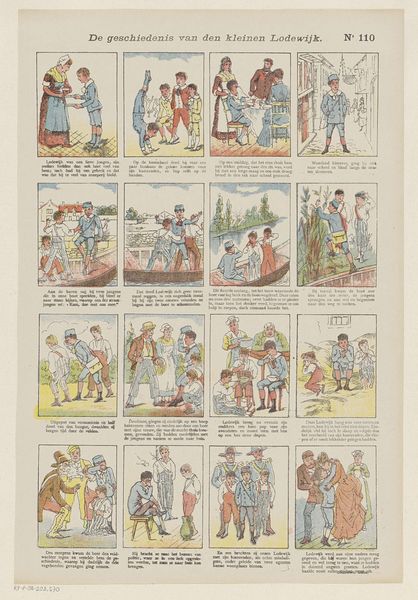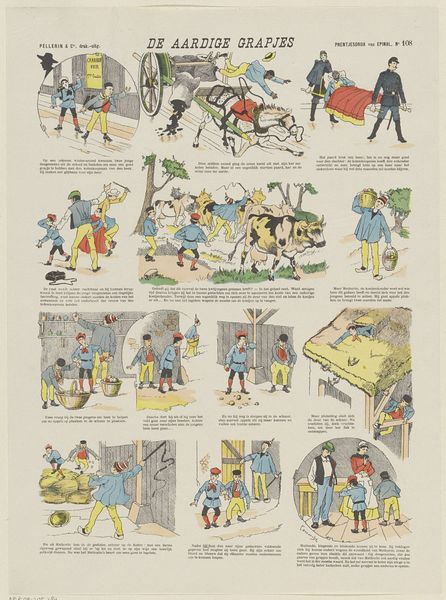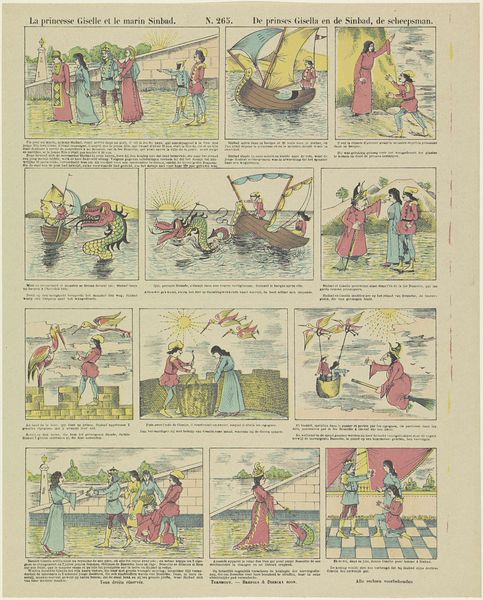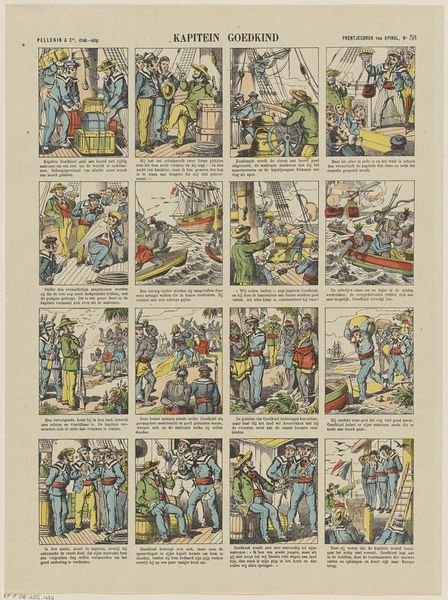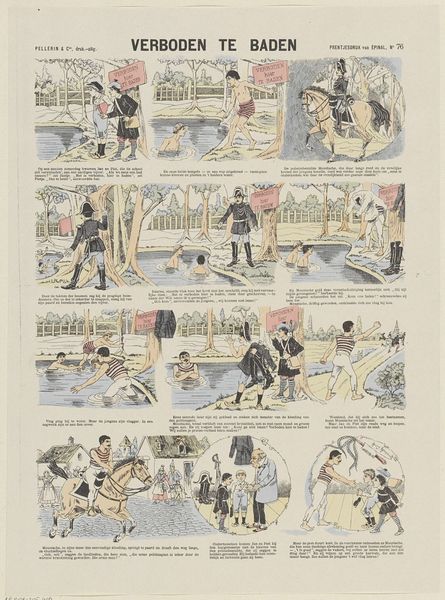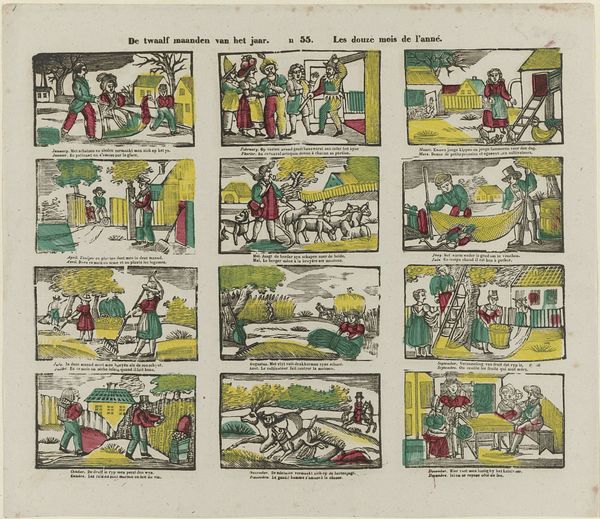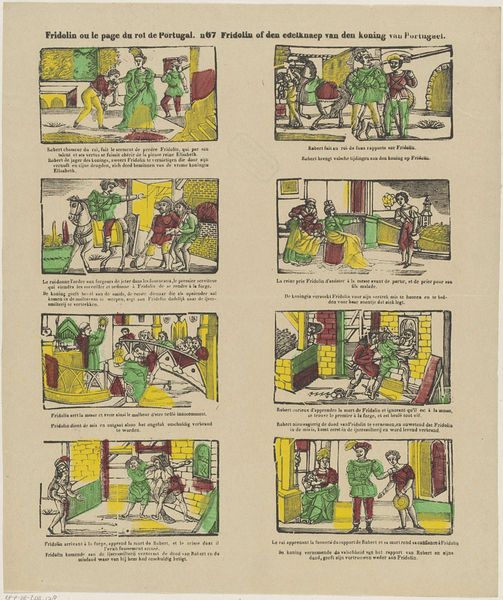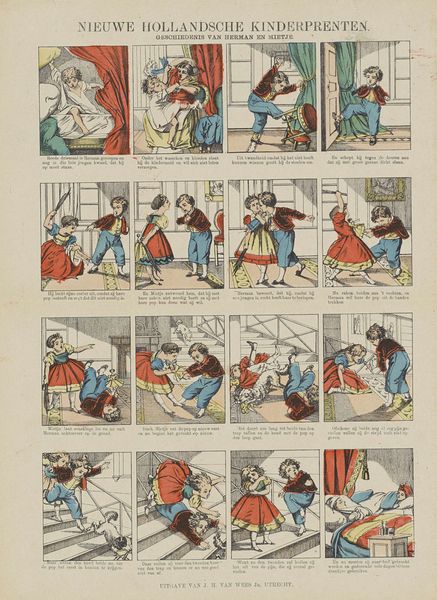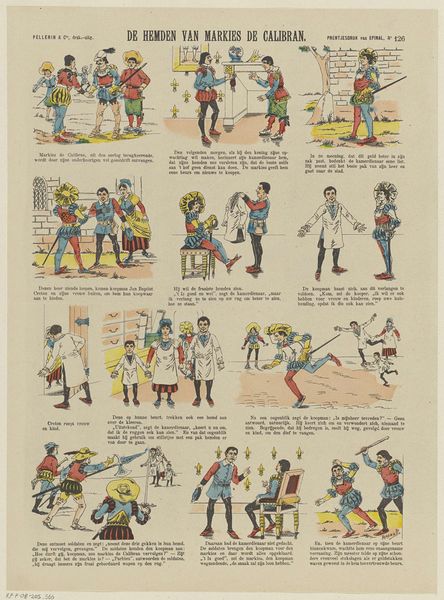
Het noodlot mag vaak grillig heeten / Veel menschen ook van grillen weten! / Terug te komen zonder weg te zijn gegeaan, / Dat heeft een flink soldaatje eens gedaan c. 1902
0:00
0:00
#
comic strip sketch
#
narrative-art
#
comic strip
# print
#
sketch book
#
traditional media
#
personal sketchbook
#
sketchwork
#
comic
#
sketchbook drawing
#
storyboard and sketchbook work
#
sketchbook art
#
story boarding
Dimensions: height 395 mm, width 296 mm
Copyright: Rijks Museum: Open Domain
Curator: This artwork, "Het noodlot mag vaak grillig heeten / Veel menschen ook van grillen weten! / Terug te komen zonder weg te zijn gegeaan, / Dat heeft een flink soldaatje eens gedaan" by G. Angeli, dates to around 1902. It presents as a printed comic strip, seemingly a personal sketchbook page or storyboarding experiment. Editor: It’s chaotic. My first impression is one of disarray and satire. The multitude of panels, each depicting absurd scenarios, almost screams a critique of some kind of societal structure, doesn't it? Curator: Indeed, its structure reveals a calculated arrangement, almost a visual encoding of the narrative. Notice how Angeli employs sequential imagery to deliver a satirical punchline about this hapless soldier's adventures. Editor: I'd argue that this artwork acts as a form of social commentary on military life and perhaps even the capriciousness of fate itself. Consider the soldier as a metaphor for those subjected to external forces. Curator: Interesting perspective. However, observe the linework: each figure is delineated with a controlled yet expressive touch, showcasing Angeli's technical skill within this popular visual format. The composition skillfully guides the viewer's eye. Editor: Agreed, but look beyond technique and consider the narrative's context within the landscape of Dutch social history. Was this character a representation of compulsory service? What positionality is it representing? The absurdity hints at something deeply political. Curator: Certainly. But I want to mention that Angeli expertly manipulates form to create visual rhythm. Editor: I think you mean the layout's effectiveness, not just its visual components, is deeply entangled with the social narratives being conveyed here. Curator: It would appear that while our analysis of the artistic elements varies, our engagement with this comic print showcases the diversity of thought that can arise from interpreting artistic intent. Editor: Absolutely. Art always exists as a locus for interpreting individual intention as a reflection on collectivity. Looking at these panels through time offers such generative potential.
Comments
No comments
Be the first to comment and join the conversation on the ultimate creative platform.
